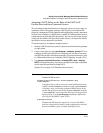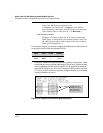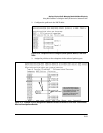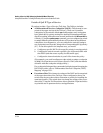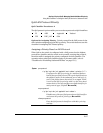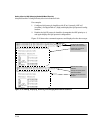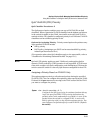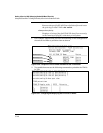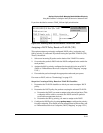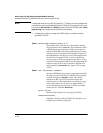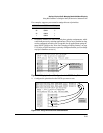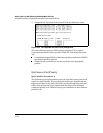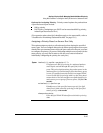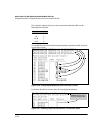
Quality of Service (QoS): Managing Bandwidth More Effectively
Using QoS Classifiers To Configure Quality of Service for Outbound Traffic
QoS VLAN-ID (VID) Priority
QoS Classifier Precedence: 5
The QoS protocol option enables you to use up to 256 VLAN-IDs as QoS
classifiers. Where a particular VLAN-ID classifier has the highest precedence
in the switch for traffic in that VLAN, then traffic received in that VLAN is
marked with the VID classifier’s configured priority level. Different VLAN-ID
classifiers can have differing priority levels.
Options for Assigning Priority. Priority control options for packets carry-
ing a specified VLAN-ID include:
802.1p priority
DSCP policy (Assigning a new DSCP and an associated 802.1p priority;
inbound packets must be IPv4.)
(For operation when other QoS classifiers apply to the same traffic, refer to
“Classifiers for Prioritizing Outbound Packets” on page 15-8.)
No t e QoS with VID priority applies to static VLANs only, and applying QoS to
dynamic VLANs created by GVRP operation is not supported. A VLAN must
exist while a subject of a QoS configuration, and eliminating a VID from the
switch causes the switch to clear any QoS features configured for that VID.
Assigning a Priority Based on VLAN-ID Only
This option assigns a priority to all outbound packets having the specified
VLAN-ID (VID). You can configure this option by either specifying the VLAN-
ID ahead of the qos command or moving to the VLAN context for the VLAN
you want to configure for priority.
Syntax: vlan < vlan-id > qos priority < 0 - 7 >
Configures an 802.1p priority for outbound packets belong-
ing to the specified VLAN. This priority determines the
packet’s queue in the outbound port to which it is sent. If the
packet leaves the switch in a tagged VLAN, it carries the
802.1p priority with it to the next downstream device. You
can configure one QoS classifier for each VLAN-ID. (Default:
No-override)
15-39



